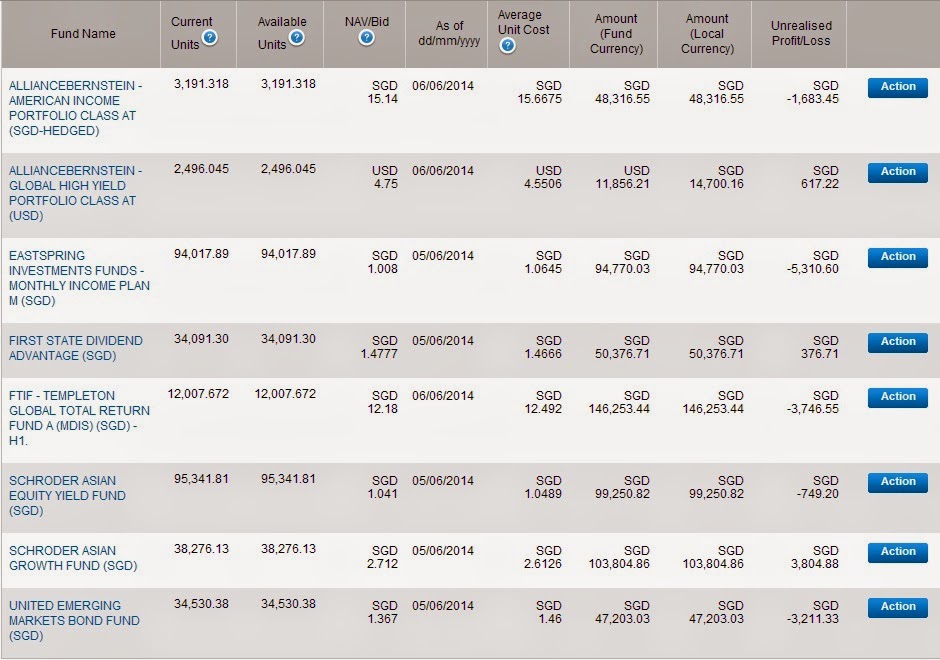Today I read
an annuity benefit illustration on a brochure:
40 year old
male contributes 24,200 yearly for 5 years.
At age 65,
he receives $2,000 per month (non-guaranteed) till 85 with a lump sum maturity
of $72,000 (non-guaranteed).
Hence the total potential return is $552,000.
The insurer
has a track record of meeting its projection. Hence for simplicity sake, let’s
assume above are guaranteed returns.
At the
onset, it sounds extremely attractive to me. I can have an income to complement
my CPF life of about $1,200 per month and about $2,000 a month I will be able
to retire comfortably assuming inflation is at 0%!
However, as
a discerning citizen, I tried to replicate using a balance funds portfolio of
unit trust.
Assume I purchase a balance equity fund of Fixed income + Equity.
The fund is likely to be able to meet its 4.5% payout and at the same time at
least maintain its NAV.
The 40 year
old male contributes 24,200 per year for 5 years. Let’s assume a 3% return at
0% sales charge for the first 5 years.
5 Years later, he would receive $128,481.
Using the
128,481, he invests for the long term at 4.5% per annum for the next 20 years.
He would receive $309,859.
Thereafter
at 65, he elects to pay himself 9% P.A and he would receive $27,887.31 yearly
and after 20 years he would still receive $127,573.20, which was roughly the
amount he started at age 45.
The
difference?
If he outsourced his retirement planning to an annuity product, he
receives $552,000. If he does it himself diligently, he may receive $685,319 or
more, assuming his investment average return is no more than 4.5% per annum.
That’s
a huge $133,319 difference!
On top of
that, the DIY route allows flexibility to bring forward the pay cheque if
required and still get a better return. There is no early termination charges
neither is there insurance coverage though.
So what
does this exercise mean? To me, it means the following
- Most
Singaporeans are rich. They can afford to earn $133,319 lesser over the long
term. Singaporeans are not bothered with retirement planning and putting the
blame on others for having to work past retirement age. This is why the market is
filled with so many retirement products that earn no more than 5% on projection
basis and yet selling like hot cakes.
- The
effects of compounding has been used repeatedly by annuity companies to give
seemingly huge returns at a paltry investment return rate of less than 5%.
- Consider
instead to contribute to SRS and CPF special account instead while investing
for the long term and enjoy the benefits of compounding instead of trying to
buy 1-2 products and call retirement planning a day.
- The present value of money must always be considered and discount back to present value in order to make sense of the projections you are looking at. In reality, SGD 1M at 45 years from now at 4% inflation rate is really only worth $171,200. That's probably a 2 room flat future value with a lease of 99 years. Hence receiving $28,000 yearly 45 years later is only $4793 or no more than $400 a month!
